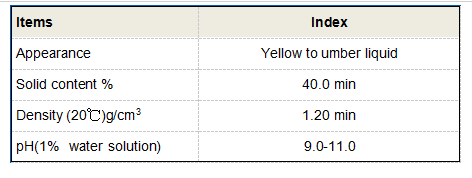Safety Data Sheet for Poly Aluminum Chloride Comprehensive Guidelines and Handling Precautions
Understanding Poly Aluminum Chloride (PAC) and Its Safety Data Sheet (SDS)
Poly Aluminum Chloride (PAC) is a widely used coagulant in various industries, particularly in water treatment processes. As a product of aluminum and chlorine, PAC serves as an effective agent in the removal of turbidity and contaminants from water. Its widespread application and effectiveness make it a common choice for municipal water treatment facilities, wastewater treatment plants, and even in some industrial processes.
Composition and Properties of PAC
PAC is a chemical compound formed when aluminum ions and chlorine are polymerized in a specific ratio. This results in a complex compound that exhibits superior coagulant properties compared to traditional coagulants like aluminum sulfate. PAC is known for its solubility in water and its ability to work effectively across a range of pH levels, making it suitable for various environments.
The product is typically available in both liquid and solid forms, with the liquid variant being most preferred for ease of use and efficiency. The appearance can range from a clear to slightly yellowish solution, depending on the specific grade and concentration.
Applications of PAC
The primary application of PAC is in water treatment. As a coagulant, it helps to aggregate small particles and colloids in water, facilitating their removal through sedimentation or filtration. This process is vital not only for drinking water purification but also for wastewater treatment, where it aids in the removal of organic pollutants and suspended particles.
Beyond water treatment, PAC is also used in paper manufacturing, as it enhances the retention of fibers and fillers, improving the quality of the final product. Additionally, the pharmaceutical and food industries utilize PAC for its emulsifying and stabilizing properties.
Safety Considerations and the Importance of SDS
Given the chemical nature of PAC, understanding its safety information is crucial for handling it properly. The Safety Data Sheet (SDS) for Poly Aluminum Chloride serves as an essential resource for anyone working with this chemical. It provides comprehensive details about potential hazards, handling procedures, and emergency measures.
poly aluminum chloride sds

Key components of a typical PAC SDS include
1. Identification The SDS begins with basic identification, including the chemical name, synonyms, manufacturer details, and recommended uses.
2. Hazard Identification This section outlines the potential health hazards associated with PAC. It may detail irritations to the skin, eyes, or respiratory system upon exposure.
3. Composition/Information on Ingredients This part specifies the chemical composition of PAC, including the concentration of aluminum and chloride ions.
4. First-Aid Measures In the event of exposure, the SDS provides guidelines for necessary first-aid responses, such as rinsing affected skin or eyes with water and seeking medical attention.
5. Handling and Storage Safe storage and handling practices are outlined to minimize risks. This may include recommendations for using personal protective equipment (PPE) and guidelines for ventilation.
6. Disposal Considerations The SDS includes recommendations for the proper disposal of PAC, highlighting the importance of following local environmental regulations.
7. Regulatory Information The final parts of the SDS cover relevant regulations and compliance standards, ensuring that users are informed of their legal obligations when handling PAC.
Conclusion
In summary, Poly Aluminum Chloride is an essential chemical in many industrial applications, particularly for water treatment processes. Understanding its properties, applications, and safety measures is critical for effective and responsible use. The Safety Data Sheet plays a vital role in ensuring that personnel handling PAC are adequately informed of the potential risks and proper handling procedures, thus fostering a safer working environment.
-
Water Treatment with Flocculant Water TreatmentNewsJun.12,2025
-
Polymaleic AnhydrideNewsJun.12,2025
-
Polyaspartic AcidNewsJun.12,2025
-
Enhance Industrial Processes with IsothiazolinonesNewsJun.12,2025
-
Enhance Industrial Processes with PBTCA SolutionsNewsJun.12,2025
-
Dodecyldimethylbenzylammonium Chloride SolutionsNewsJun.12,2025





